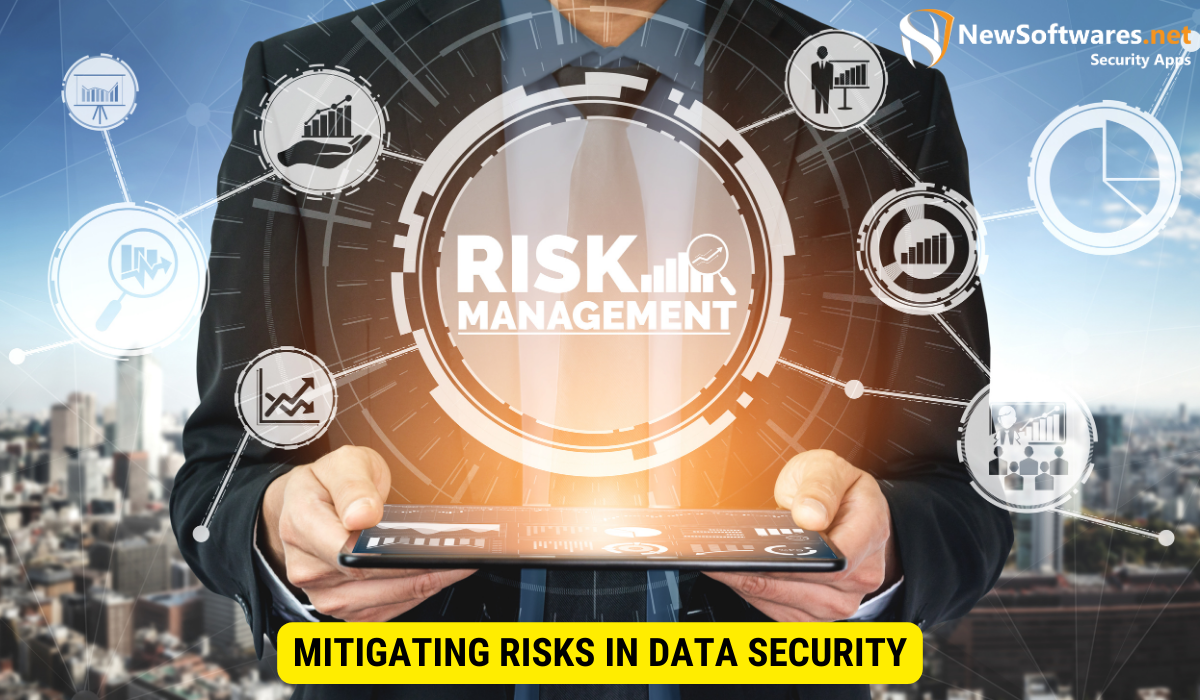Resetting encrypted information is a decision that depends on security concerns like compromised encryption keys or weak passwords.
In today’s digital age, protecting sensitive information has become a serious concern for individuals & organizations. With data breaches rising and cybercriminals becoming increasingly sophisticated, the need for strong data security measures is more evident than ever. One method that is often employed to safeguard confidential data is encryption. By encoding data into a format that is unreadable without the corresponding decryption key, encryption ensures that even if an unauthorized person gains access to the data, they will be unable to comprehend its contents. However, this poses a unique dilemma when resetting encrypted information.
Understanding the Basics of Data Security

Before delving into the intricacies of resetting encrypted information, it is crucial to grasp the fundamentals of data security. At its core, data security encompasses protecting data from illegal access, use, disclosure, disruption, modification, or destruction. It involves the implementation of policies, procedures, and technologies that aim to ensure data confidentiality, integrity, and availability. Data security can be applied to various forms of data, such as personal information, financial records, intellectual property, and trade secret, to name just a few.
Data security is a multifaceted discipline that requires a comprehensive approach. It involves not only technical safeguards but also organizational and administrative measures. Technical safeguards include encryption, access controls, firewalls, antivirus software, and digital signatures. These measures help prevent unauthorized access to data and protect it from malicious activities such as hacking, data breaches, and malware attacks.
Organizational measures involve establishing clear data security policies and procedures, conducting usual risk assessments, and implementing appropriate security controls. This includes training employees on data security best practices, enforcing strong password policies, and implementing data classification and handling procedures.
Administrative measures focus on the governance and management of data security. This includes appointing a data security officer or security team responsible for overseeing data security initiatives, conducting regular audits and compliance assessments, and ensuring that data security practices align with applicable laws, regulations, and industry standards.
What is Data Security?
Data security protects data from illegal access, use, disclosure, disruption, modification, or destruction. It involves the implementation of policies, procedures & technologies that ensure data confidentiality, integrity, and availability. Data security measures include encryption, access controls, firewalls, antivirus software, and digital signatures.
Encryption, in particular, is a critical aspect of data security. It involves transforming data into an unreadable form using an encryption algorithm. The encrypted data can only be deciphered with the appropriate decryption key. This provides an additional layer of safety, making it significantly more tough for unauthorized individuals to access and comprehend sensitive data.
Encryption is especially crucial when data is stored or transmitted over networks or in the cloud. Data becomes susceptible to interception, eavesdropping, and unauthorized access without encryption. By encrypting data, organizations can ensure that even if data is compromised, it remains unreadable and unusable to unauthorized individuals.
Importance of Encrypted Information
Encryption plays a vital role in data safety by rendering data unreadable without the appropriate decryption key. Encrypted information provides an additional layer of protection, making it significantly more hard for unauthorized individuals to access and comprehend sensitive data. This is especially crucial when data is stored or transmitted over networks or in the cloud. Data becomes susceptible to interception, eavesdropping, and unauthorized access without encryption.
Furthermore, encrypted information helps organizations comply with data protection regulations and industry standards. Many regulatory frameworks, such as the General Data Protection Regulation (GDPR) and the Health Insurance Portability and Accountability Act (HIPAA), require organizations to implement appropriate security measures to protect sensitive data. Encryption is often considered a best practice and a recommended security control to meet these requirements.
It is important to note that encryption is not a one-size-fits-all solution. Different types of data may require different encryption methods and key management practices. Organizations must carefully assess their data security needs and implement encryption solutions aligning with their requirements.
The Dilemma of Resetting Encrypted Information
While encryption offers substantial benefits in terms of data security, it also presents a unique challenge when considering the reset of encrypted information. In certain situations, resetting encrypted data may seem viable, particularly in response to a security breach or when password-related vulnerabilities are discovered. Though, this decision requires careful consideration, as it entails potential risks and implications that can impact individuals and organizations.
Pros and Cons of Resetting Encrypted Data
Resetting encrypted data can have both positive and negative consequences. On one hand, it provides an opportunity to address potential security vulnerabilities, ensuring that unauthorized individuals cannot access the encrypted data. Organizations can mitigate the threats associated with compromised encryption keys or weak passwords by resetting encrypted information.
On the other hand, it is essential to consider the potential drawbacks as well. Resetting encrypted data can permanently lose access to the encrypted information if the encryption keys are irretrievably altered during the reset process. Furthermore, the resetting process may require significant time, effort, and resources, potentially causing disruptions to normal business operations or affecting individuals’ ability to access their data.
Factors to Consider Before Resetting
Before deciding to reset encrypted information, several factors must be carefully evaluated. These include the sensitivity and criticality of the data, the potential impact of a data breach, the feasibility of data recovery after resetting, and the legal and regulatory requirements related to data retention and protection. Organizations should also assess their overall data security posture, including their encryption protocols, access controls, and incident response plans, to determine if a reset or alternative measures can adequately address the identified vulnerabilities.
The Process of Resetting Encrypted Information
If the decision is made to proceed with resetting encrypted data, it is essential to follow a well-defined process to ensure that the reset is executed effectively and efficiently.
Steps to Reset Encrypted Data
The process of resetting encrypted data typically involves the following steps:
- Evaluation: Assess the necessity of a reset and determine the potential risks and implications.
- Backup: Create a backup of the encrypted data, ensuring a copy is retained in case of data loss during resetting.
- Identification: Identify the encryption keys or passwords that need reset and ascertain the impact on data access and availability.
- Reset: Perform the reset process, ensuring the secure and irreversible alteration of the encryption keys or passwords.
- Validation: Verify the successful reset of the encrypted data and conduct necessary testing to ensure data accessibility and integrity.
Tools and Techniques for Data Resetting
Various tools and techniques are available to aid in resetting encrypted information. These can include specialized software applications that facilitate the identification and modification of encryption keys or passwords, as well as cryptographic algorithms and protocols that ensure the secure alteration of the encrypted data. Additionally, consulting with data security professionals and engaging external cybersecurity service providers can provide valuable expertise and resources to navigate the complexities of data resetting.
Mitigating Risks in Data Security

While the dilemma of resetting encrypted information is an important consideration, it should not overshadow the broader goal of mitigating risks and ensuring comprehensive data security. Organizations and individuals should adopt a holistic approach that incorporates best practices and emerging technologies to achieve robust data protection.
Best Practices for Secure Data Management
Implementing best practices for secure data management is instrumental in mitigating risks and strengthening data security. These practices can include:
- Regular data backups and testing of data recovery processes;
- Implementing strong access controls and authentication mechanisms;
- Deploying a robust firewall and intrusion detection system;
- Conducting regular security audits and vulnerability assessments;
- Encrypting data in transit and at rest;
- Training employees on data security awareness and safe computing practices.
Future Trends in Data Security and Encryption
Data security and encryption are constantly evolving as cyber threats continue to evolve. Some emerging trends in this space include:
- Increased adoption of advanced encryption algorithms and protocols;
- Advancements in quantum-resistant encryption to counter emerging threats;
- Widespread implementation of biometric authentication for enhanced data protection;
- Combination of artificial intelligence (AI) and machine learning in data security to detect and respond to threats in real time;
- Focus on privacy-preserving technologies and techniques, such as differential privacy and homomorphic encryption.
Key Takeaways
- Encryption plays a crucial role in data security by rendering data unreadable without the appropriate decryption key.
- Resetting encrypted information can address potential security vulnerabilities but requires careful consideration of the risks and implications.
- Factors to consider before resetting encrypted data include the sensitivity of the data, potential data recovery after resetting, and legal and regulatory requirements.
- resetting encrypted data involves evaluation, backup, identification, reset, and validation.
- Best practices for secure data management, such as regular backups, strong access controls, and employee training, are important for comprehensive data security.
FAQs
Is encryption necessary for data security?
Yes, encryption is a crucial component of data security as it helps protect data from unauthorized access and ensures its confidentiality.
When should encrypted data be reset?
Encrypted data should be reset when there are security concerns, such as compromised encryption keys, weak passwords, or suspected unauthorized access.
What are the potential risks of resetting encrypted information?
The potential risks of resetting encrypted information include the permanent loss of data access, disruptions to normal operations, and potential data integrity issues.
How can organizations enhance their data security?
Organizations can enhance their data security by implementing best practices such as regular backups, strong access controls, and employee training, as well as staying abreast of emerging trends and technologies in data security.
What is the future of data security and encryption?
The future of data security and encryption involves advancements in encryption algorithms, adoption of quantum-resistant encryption, increased use of biometric authentication, AI and machine learning integration, and focus on privacy-preserving technologies.
Conclusion
In conclusion, the dilemma of resetting encrypted information highlights the intricate nature of data security. While resetting encrypted data can provide certain benefits, careful thought must be given to the potential risks and implications involved. Organizations and individuals should adopt a comprehensive approach to data security, employing best practices and staying informed about future trends to protect their sensitive information effectively. By doing so, they can navigate the data security landscape confidently.
